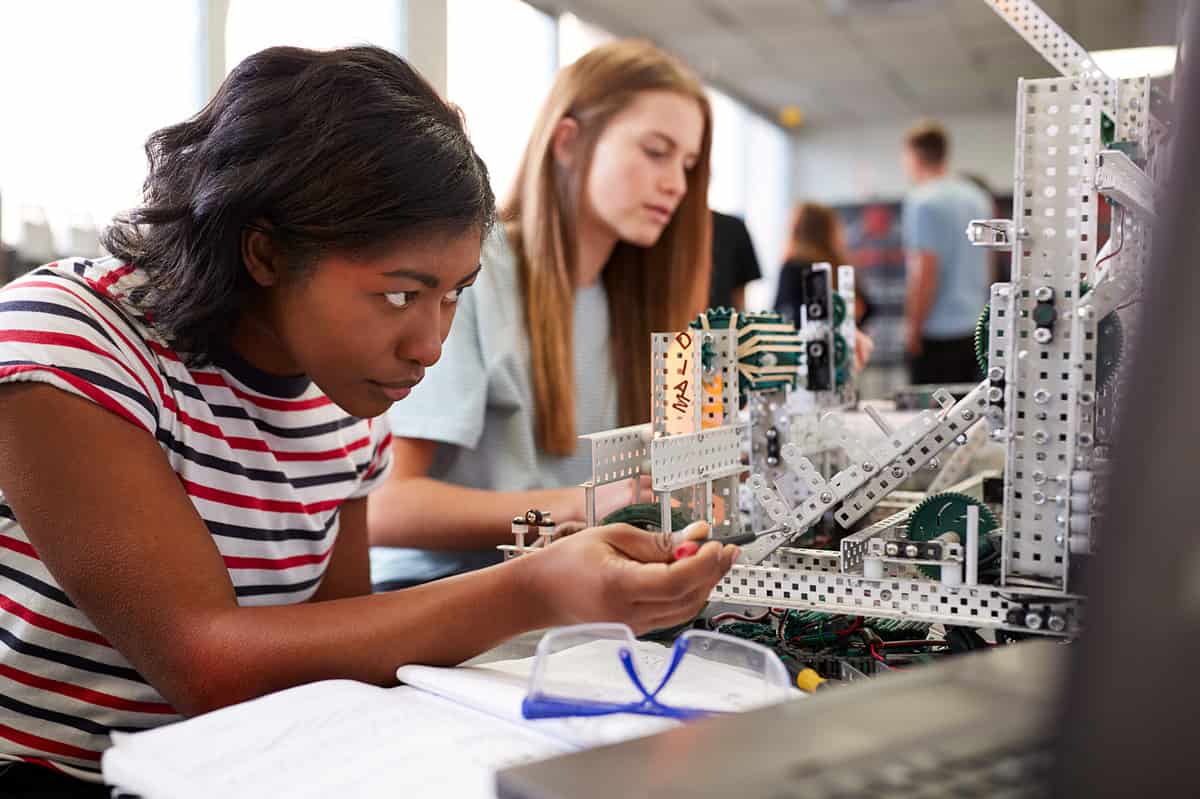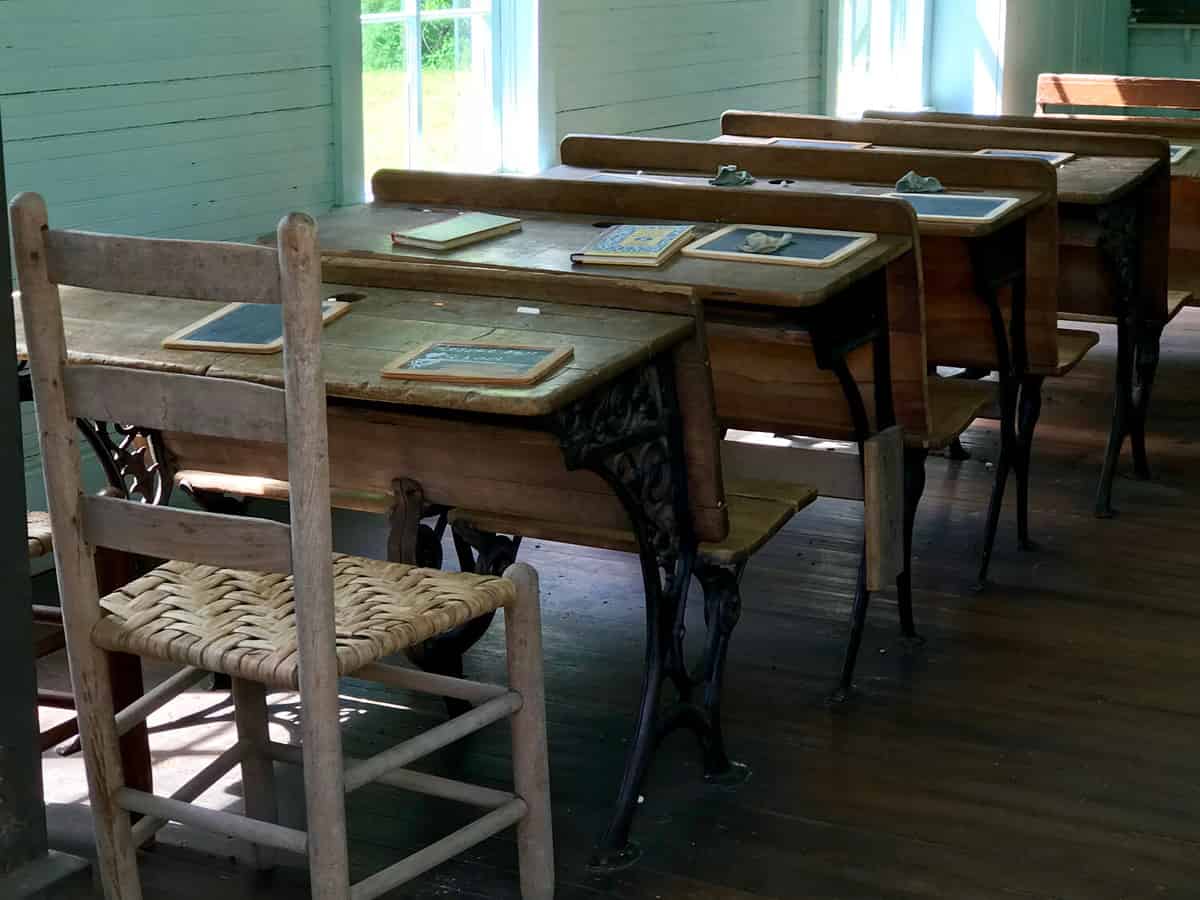The shared history that the remaining old schools in Idaho symbolize is palpable. Since its founding in 1890, the state of Idaho has been predominately rural. Most of its residents received their education in rural schools during the late 19th century and up to the middle of the 20th century.
Over the years, more than 100 rural schoolhouses housed students in 87 districts; most of these were abandoned with the Consolidation Movement in the middle of the 20th century. The bulk have been lost. However, others were still in use as community facilities. Only roughly twenty-five are believed to be still standing today, a loss of more than 75%.
The oldest elementary schools in Idaho do have a rich history, as we shall see in this article. While it is difficult to determine the exact age of the oldest schools in this larger-than-life state, here are some schools in Idaho that have been around for a long time.

The schools in Idaho allow students to focus on their educational journey, look toward the future, and find new passions.
©Monkey Business Images/Shutterstock.com
The Oldest Schools in Idaho
1. Boise School District
8169 W. Victory Rd., Boise, ID 83709
F. B. Smith founded Boise's first school in the fall of 1863 at the intersection of Idaho and Seventh Streets.
In the Idaho Territory, a public education system was founded in 1864. J. B. Knight was named county superintendent for Ada County by the territorial governor in 1865, and he established School District No. 1, which comprised Boise City and surrounding areas.
In June 1865, Boise's first public school was inaugurated. Public donations provided the majority of the funding to develop and maintain schools. County finances needed to be more sufficient for this.
The public school was closed from June 1866 to July 1868 due to financial issues. The residents of Boise passed a tax levy of 5 mills for each dollar of taxable property in September 1868. On Eighth and Washington Streets, a school was constructed with the proceeds. Unfortunately, the school cost more than expected, and the voters rejected a plan to raise taxes to cover the extra building expenses. Because of this, it took until 1871 for the building debt to be fully repaid.
In 1880, an effort was made to improve the District's financial situation. Boise City was divided into three districts: District No. 1, which covers the region south of Main Street and east of Eighth Street; District No. 22, which covers the area south of Main; and District No. 24, which covers the region west of Eighth. Boise residents once more demanded a new manner of funding public schools due to rising enrolment and mounting budgetary issues. Thus, the three existing districts were merged to create the Independent School District of Boise City #1 to improve public education and offer a graded system.
The residents of Boise were resolved to establish a more robust public school system when the legislature convened in January 1881. R. Z. Johnson, a territorial politician who later served as a trustee, drafted the legislation establishing the Boise District. On February 4, 1881, the territorial governor approved the law, creating the Independent School District of Boise City #1.

Idaho's schools have amazing opportunities to explore a variety of subjects.
©Monkey Business Images/Shutterstock.com
The Boise District was given a charter by the legislation that created it, which is still in effect today. Although the legislature has occasionally modified the Charter, many original clauses remain in place.
2. Albion State Normal School
921 South 8th Avenue | Pocatello, Idaho, 83209
The Albion State Normal School, also referred to as the Albion State Normal School and Teachers Training College, was once an esteemed educational institution located in Albion, Idaho.
The college was founded in 1893 with the aim of providing specialized training for aspiring teachers. It played a vital role in the early development of education in Idaho. It offered courses in English, mathematics, science, history, and physical education that focused on pedagogical training.
Albion State Normal School was situated in Cassia County’s small town called Albion. Its campus boasted various buildings like dormitories and administrative facilities, along with libraries and classrooms. Furthermore, the schools' setting was renowned for its picturesque location surrounded by southern Idaho's mountains and natural landscapes.
Over time Albion State Normal School underwent massive expansion, resulting in increased student intake, necessitating new building construction. This happened while continuing updating of learning programs, following ongoing changes in educational needs.
The institution significantly contributed to bettering education standards throughout Idaho during its operation. It did this by training various certified teachers employed throughout schools within the state. They played substantial roles in promoting good quality education within the state.
Regrettably, changes within educational policies affecting teacher training requirements necessitated the permanent closure of this prestigious institution back in 1951, marking an end to an era. However, its legacy is still evident; it is currently considered one of Idaho's important historic places, listed under the National Register as “Albion State Normal School Building.”
An important chapter in Idaho's educational journey was marked by the establishment of Albion State Normal School- an innovative institution dedicated to shaping future educators' skills via extensive training and resource provision. Although closed today, this pioneering establishment is remembered fondly as a historical landmark that was instrumental in shaping the state's academic landscape forevermore.
Its impact continues today – ensuring that generations to come will acknowledge their debt to this revered institution.
Albion State Normal School in the News
On May 18, 2023, Magic Valley covered the history of Albion State Normal School in an article looking back on its storied past. By the time of the school's closure, it had around 6,000 alumni. It was added to the National Register of Historic Places in 1980, a prestigious honor that ensures the school's history will be respected and acknowledged for decades to come. The school wasn't authorized to offer baccalaureate degrees until 1947, four years before its closure.
Back in September 2022, Mix 106 covered the Albion State Normal School's cultural significance as one of the purportedly most haunted places in the northwest. The Haunted Mansions at the Albion School of Chaos provides curated experiences for guests, introducing them to the paranormal aspects of the long-closed school.
3. Garfield District School
1914 S. Broadway Ave., Boise, ID 83706
According to an early school district map, Garfield was initially part of District No. 9, the Holcomb District. However, in 1910, Garfield was annexed into the Boise School District.
The original Garfield school building was located north of the present structure, across Boise Avenue. It was eventually demolished in the early years. During the early stages, most Boise schools were located north of the Boise River.

Idaho's oldest schools have been a good place for students to practice autonomy and find new passions.
©Ground Picture/Shutterstock.com
The second Garfield School was constructed in 1927 at its current location. The main building was a two-story structure with a basement, housing eight classrooms for grades one through eight. Due to the growing South Boise area in the 1940s, an expansion of Garfield became necessary.
In Superintendent Zed L. Foy's 1949 annual report, he mentioned that the planned addition to Garfield School would provide 21 modern classrooms. This expansion would accommodate immediate needs and allow for the abandonment of the old Garfield building, which was to be sold at the end of the 1949 school year.
The additions included the gymnasium, the current cafeteria, and all the rooms on the north end of the building. Initially, these expansions seemed sufficient. However, the 1960s brought various special programs and the introduction of kindergarten in the early 1970s, necessitating additional space.
Every available space, including nooks and corners, was utilized to house reading teachers, special education programs, tutors, volunteers, and other initiatives like instrumental music. The stage area was even sealed off to create an extra classroom.
4. Capital High School
8055 W. Goddard Rd., Boise, ID 83704
On September 7, 1965, Capital High School welcomed its first batch of 1100 students amidst a construction site, with wires and bulldozers occupying what should have been a lawn.
The school accommodates a student population ranging from 1200 to 1400, free from any construction equipment in sight. Over the years, additions such as the TC Planetarium, auxiliary gym, classroom wing, baseball fields, a track, tennis court, and an extra parking lot have expanded the school's facilities.
Throughout its existence, Capital High School, proudly known as Home of Eagle Pride, has fostered a rich tradition of excellence in academic achievements, extracurricular involvement, and athletic prowess.
The student body promotes school spirit, pride, and engagement in clubs and activities. Furthermore, there is a strong emphasis on embracing the diverse characteristics and personalities of others with understanding and acceptance.
In collaboration with parents and the community, the dedicated staff at CHS work tirelessly to impart knowledge, values, and skills that cultivate a lifelong passion for learning.
5. Greenleaf Friends Academy
20565 Academy Rd Greenleaf, ID 83626
Established in 1908, the same Friends Quakers group founded the Greenleaf, Idaho community. Greenleaf Friends Academy has earned a renowned reputation across the Northwest. They are committed to academic excellence, exceptional music and athletic programs, and unwavering Christian values that set them apart.

Most of Idaho's oldest schools have undergone a complete transformation to accommodate today's fast-paced learning world.
©Victoria 'Tori' Meyer/Shutterstock.com
Situated in the serene Boise Valley, just 5 miles west of Caldwell, the Academy has flourished over the past century. Starting as a humble one-room schoolhouse, it has now evolved into a remarkable facility encompassing classrooms, a gymnasium, an elementary building, a preschool, a cafeteria, athletic fields, and playgrounds to cater to all the students' needs. The community thrives in diversity and unity with a student body representing over 40 different churches throughout the Boise Valley and reaching as far as southeastern Oregon.
Christian education holds significant value at Greenleaf Friends Academy. The school goes beyond preparing students solely for college; they equip them for a purposeful life that brings glory to God. The students understand that, with the power and grace of God, they can confidently navigate any situation, be it success and joy or adversity and disappointment.
Greenleaf Friends Academy in the News
On February 17, 2023, KTVB published an article detailing how the Greenleaf Friends Academy girls' basketball team was preparing to honor a deceased assistant coach at a state tournament. Loma Bittick was involved in a deadly car crash in early February 2023, devastating the Greenleaf Friends community. Her husband, the team's head coach, was hospitalized, but survived. Loma taught mathematics at Greenleaf Friends Academy, and was remembered by students as a fantastic teacher who was always positive with her students.
As they entered their first state tournament appearance since 2009, the Lady Grizzlies pledged that they were competing not just for themselves, but for Loma and Jim Bittick. In the days leading up to the tournament, the athletes made a point to visit Jim Bittick in the hospital to offer warm wishes and reassurance.
6. Beacon Christian Schools
615 Stewart Ave, Lewiston, ID 83501
Established in 1918, Beacon Christian School initially stood on 8th Avenue, but in 1972, it relocated to its current position on Stewart Avenue. Throughout its history, the school has expanded its academic, fine arts, and athletic offerings, enabling students to reach their utmost potential.
The emphasis on building strong character has empowered their students to engage in service within the Lewis-Clark Valley and beyond.
7. The Children’s School of Boise
1015 North 8th Street Boise, Idaho 83702
Founded in 1980 by Mary Clagett Smith, The Children's School of Boise is an independent, non-profit educational institution. Their primary focus is to recognize the equal importance of affective and cognitive development in their students' education. Both aspects work in tandem to shape their learning experiences.
This approach, known as Developmental Interaction, has evolved through extensive research and analysis conducted at Bank Street College of Education in New York City since the early 1900s. It represents a comprehensive integration of developmental psychology, cognitive theory, and educational practice.
Guided down a path of intellectual growth, children are offered balanced academic rigor as well as practical, hands-on experiential learning that fosters their social-emotional growth and enhances both classroom critical thinking skills and individual curiosities.
Small class sizes at The Children's School Of Boise allow for personalized attention, ensuring each student achieves the most from what the curriculum has to offer.
It is through this dynamic approach in the classroom with experienced teachers who are always willing to guide students beyond innovative curriculums that strong teacher-student relationships form.
The most important aspect when it comes to the faculty's dedication is how much involvement they have in nurturing confidence, creativity, and practicality among their students. Even though changes in teaching methods have happened over time; one mainstay remains – providing quality education from experienced educators passionate about transforming young minds academically and professionally while laying a foundation for future success.
The image featured at the top of this post is ©Monkey Business Images/Shutterstock.com
